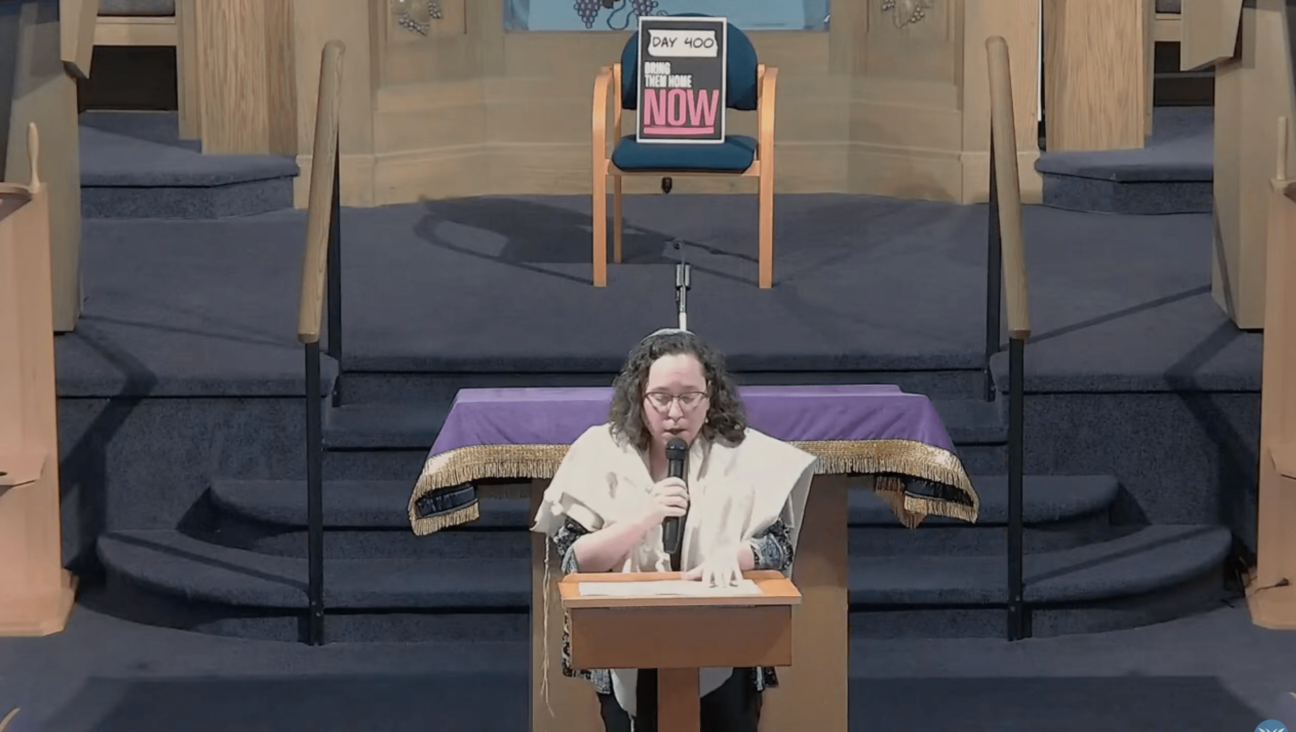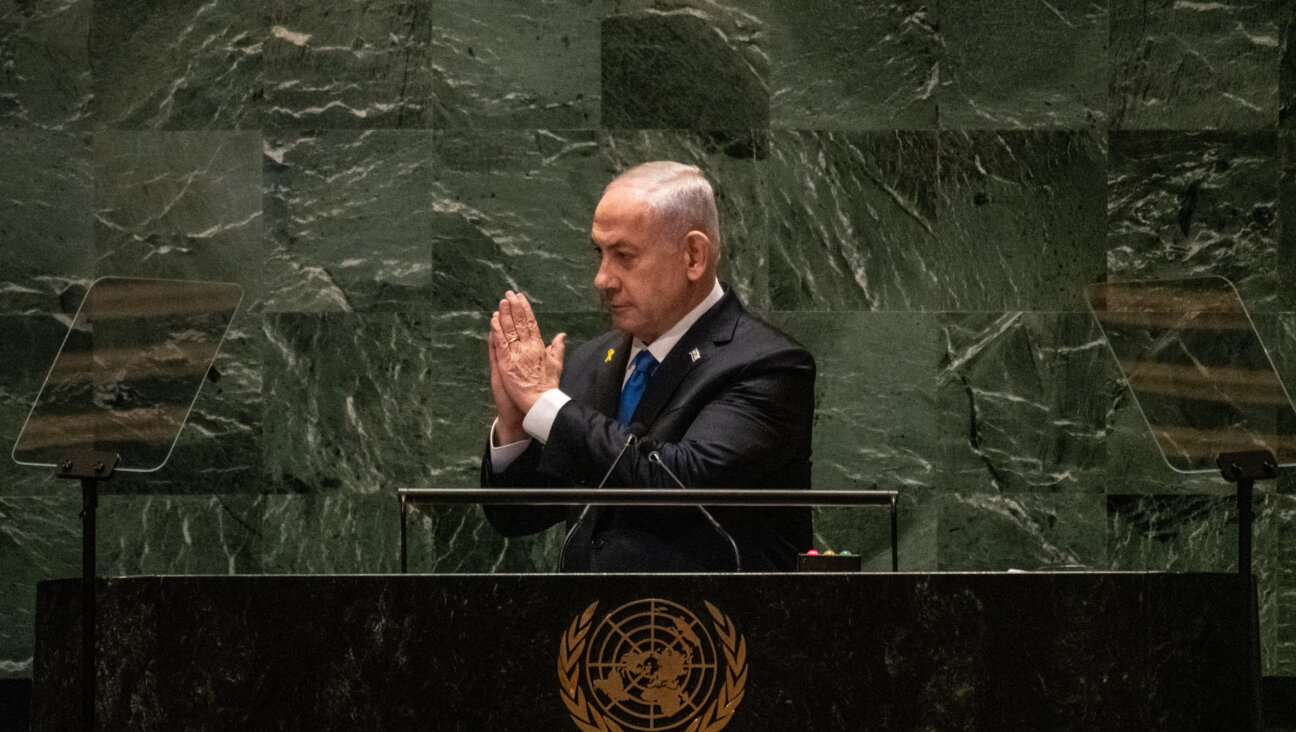Bush’s March Of the Living
They saw the hair, and the suitcases, and the prostheses. They saw the tallitot and the shoes. And at the wall between the barracks, President Bush laid a wreath.
I remember the hair, mountains of hair in a glass case, and over there, in the corner, a braid: one person. And I remember the shoes: Here, near the front, one wooden shoe: a Jew from Holland. And the suitcases, names chalked on every one; look long enough and you will see your name.
And oh do I remember the wall, the wall of death as it is called, against which some 40,000 people — mostly, we were told in 1973 when I visited Auschwitz, professors and intellectuals from Krakow — were shot. “That was the good way to die at Auschwitz,” our guide told us. And I, myself a professor in those days, felt as if I’d been punched in the stomach, so when the UJA Young Leadership group which I was accompanying went on to the next barracks/exhibit, I stayed behind. When they emerged, a friend came to me and said, “You must go into that one. Go to the second floor.” So I did, alone.
Until then, all the exhibits had been enormous, all in glass cases, perhaps 10 feet deep, 15 or 20 feet long, and the wretched remains displayed within them piled waist-high. Combs and brushes in one, eyeglasses in another, and all those others, the ones Bush and his wife saw last Saturday, according to the Associated Press dispatch datelined “Oswiecim, Poland.”
But here, on the second floor of the barracks, was an exhibit just coffee-table sized, a glass case in which you’d perhaps expect to find medals, or old photographs, or first-day issue stamps, but what you in fact were seeing in this glass case, and would forever weep when remembering were babies’ pacifiers.
So, Auschwitz. Of which the president, correctly, later said, “With every murder a world was ended.” He is, of course, not the first to say that, but it is well worth saying, and often, lest we become inured to murder. It has become routine, so often do we read of it, so frequently is it, thanks to CNN, on display in our living rooms. It is not yet, and may it never be, a “ho-hum” thing, but it threatens to become a “tsk-tsk” thing. Car bomb in Jerusalem? Thirteen dead? Shame. But we’ve seen the wreckage and the rescuers so many times before. What else is new? No. Thirteen worlds were ended.
It is a strange thing to be president. When one leaves Auschwitz, one is asked to sign the guestbook. In the case of Bush, the words of his message had been written before he was given the book to sign. I suppose if you’re the president, you get not only speechwriters but also guestbook signers, ones with very nice handwriting. The president did, however, in his own handwriting, add two words to the rather formulaic inscription that had been earlier written in his name: “Never forget.”
Never forget: It is almost as if the president is on his own March of the Living. From Poland, after stops in St. Petersburg and Evian, on to not-quite Israel, at long last to intervene on behalf of peace.
The March of the Living is an international program that brings Jewish teens from all over the world to Poland on Yom Hashoah, Holocaust Remembrance Day, to march from Auschwitz to the death camp at Birkenau, thence to Israel for Yom Hazikaron, Israel Memorial Day, and Yom Ha’atzmaut, Israel Independence Day. In the words of its sponsors, “The goal of the March of the Living is for these young people to learn the lessons of the Holocaust and to lead the Jewish people into the future vowing ‘Never Again.’”
I have problems with the March; teens are too easily manipulated, and just as the tradition teaches that one must be at least 40 to study kabbala, so also dealing with Auschwitz requires a level of maturity that is simply not there for teens. And I’m troubled with the facility with which we move these children “from ashes to rebirth.” And I have great trouble with “never again,” a worthy slogan that tells you what to avoid but says nothing at all about what you might embrace.
And yes, I also have trouble with the words of the president, for the success of whose intervention in the Israeli-Palestinian conflict I fervently pray. I am grateful for his reminder that “with each murder, a world was ended.” I am sure his tears were real. I am sure he really meant “never forget.”
But I am equally sure there is much he does not remember, much perhaps he does not know. Does he, for example, know that with each of the deaths of our war in Iraq — not yet counted, perhaps forever countless, not murdered but dead all the same — a world was ended?
Does he recognize anything of himself in the words of Abraham Lincoln to then president James K. Polk: “Trusting to escape scrutiny by fixing the public gaze upon the exceeding brightness of military glory, that attractive rainbow that rises in showers of blood — that serpent’s eye that charms to destroy — he plunged into war.” Never again?
Leonard Fein’s most recent book is “Against the Dying of the Light: A Father’s Story of Love, Loss, and Hope” (Jewish Lights, 2001).
A message from our CEO & publisher Rachel Fishman Feddersen

I hope you appreciated this article. Before you go, I’d like to ask you to please support the Forward’s award-winning, nonprofit journalism during this critical time.
At a time when other newsrooms are closing or cutting back, the Forward has removed its paywall and invested additional resources to report on the ground from Israel and around the U.S. on the impact of the war, rising antisemitism and polarized discourse.
Readers like you make it all possible. Support our work by becoming a Forward Member and connect with our journalism and your community.
— Rachel Fishman Feddersen, Publisher and CEO





















